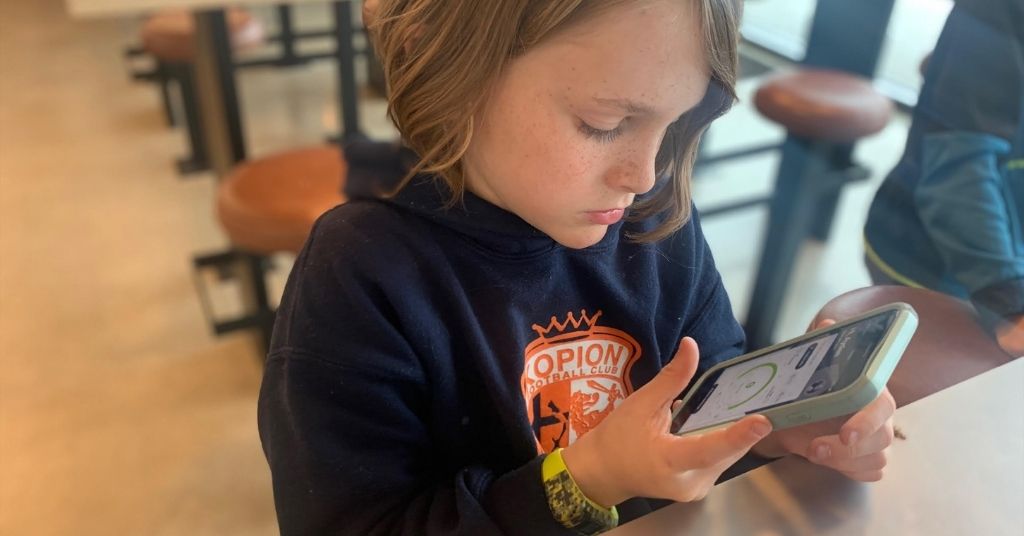
How I am teaching my deaf baby sign language
May 29, 2020
How to learn sign language
June 1, 2020Speech-to-Text apps for the deaf community

There has never been a greater need for speech-to-text apps than right now. Everyone will be wearing masks for the indefinite future as we wait for a COVID-19 vaccine. These transcription apps help people with hearing loss to communicate.
Live Transcribe
Speech-to-text apps use voice recognition to provide “captions.” There are several options, including the reputable Live Transcribe for Android. But iPhone users can rejoice. Live Transcribe for iOS launched on Global Accessibility Awareness Day (the third Thursday in May, or May 21, 2020). Despite the similar name, the iOS version is not a Google product.
“When building accessibility tools, it’s hard to think of good reasons to wait,” Live Transcribe for iOS creator Rob Norback said in a Medium interview. “But certainly COVID-19 has created more urgency.”
Over the past few months, Norback and his team pushed themselves to get the app ready for people who need it now. They’re looking into ways to offer special access to medical professionals.
With the addition of this app, all smartphone users have a “live transcribe” option. There are some differences. The Android version can recognize non-speech sounds and is voice-activated. Based on anecdotal reports, the iOS version might need some time to be comparable.
Live Transcribe for iOS is a subscription-supported app that costs $4.99/month or $49.99/year. Currently there is a free seven-day trial.
Otter.ai
Otter.ai can be used for 1:1 conversations but is especially popular for other uses like webinars and podcasts. It’s available for both Androids and iPhones. It can also be used in a web browser. One feature now available is shared notes for classes, previously only offered with Microsoft Translator via OneNote Live Captions.
Recently Otter.ai posted an Instagram video that shows how the app can be used to help deaf and hard of hearing people while they are interacting with someone wearing a face mask.
One downside to Otter is the inability to change the font inside the app, at least with an iPhone. Modifications must be made in Settings.
Up to 600 minutes/month is free for individuals. For a team, pricing can be up to $12.50/month.
Ava
Ava touts itself as “live transcription for any conversation.” Perhaps the priciest of all transcription options, Ava has a tiered subscription plan. While it is free for the occasional user (five free hours/month), a premium subscription ($14.99/month) has infinite captioning time and higher caption quality (90-95 percent). If Ava is being used for work or a board meeting, the Pro, Campus, Welcome or Event plan starts at $99/month). This plan boasts the best caption quality and customized vocabulary. Live, professionally-reviewed 99% accurate captions can be requested with Ava Scribe for additional fees.
Options
Of course we shouldn’t have to pay more for better captions. But this is where we’re lucky to have options. Tina Childress, an educational audiologist, late-deafened adult, and bilateral cochlear implant recipient who is fluent in ASL, has become an expert in technology.
“Those of us that are deaf and hard of hearing need to adapt to our listening environments, even more so now that people are wearing masks,” she says. “We’re lucky that there’s technology out there that can help us in these situations. But there’s no one solution for ALL situations. We do, however, have devices that contain a variety of tools at our disposal – our smartphone and/or tablet.”
“We’re lucky that there’s technology out there that can help us in these situations. But there’s no one solution for ALL situations.”
Childress’ approach has been to gather information, categorize it, share about it, and let the consumer make the decision about what works best for them. When it comes to speech-to-text apps, she likes features from a variety of apps. As a result, she’s learned how to strategically use them.
“One I can use for captioning phone calls and another one will be used for back up captioning a meeting,” Childress says. “Sometimes, you can even use an app in a way that wasn’t its original design purpose. An example of this is how we can ask people to use their phone with a speech-to-text app, hold it under their chin facing outward and viola! It’s like they’re wearing their own private captioning box – we can now better understand them, even if they’re wearing a mask, six feet away, with a degraded speech signal and we can’t lipread them.”
Read more: A guide to group video calling apps for hearing loss
Accuracy with Masks
Indeed, you might be wondering, how do all these apps fare if the speaker is wearing a mask? Is their voice muffled in any way? When asked about this issue, Ava shared a couple of videos to show that accuracy remained consistent.
However, the real issue is social distancing. If you’re using a speech-to-text app to communicate with someone who’s six feet away, you might have more difficulty. This is limited by the phone’s microphone. The best way to get a better signal to your phone is with a remote microphone (e.g. Phonak Roger .) The second best way, according to Childress, is a unidirectional microphone.
In fact, Childress, who provided feedback as an advisor to the Live Transcribe iOS team, has created a website with Catharine McNally. McNally is the accessibility lead at Phase2 Technology, cochlear implant recipient, and Chair of the Alexander Graham Bell Association for the Deaf and Hard of Hearing Board of Directors. This website, or Knowledge Base, for people with hearing loss, has an overview of automated captioning, in which all the speech-to-text apps are presented and described. There are even a couple of videos of Childress and McNally testing external directional microphones.
The best advice is to try different apps and see which ones you like. Have fun experimenting!




